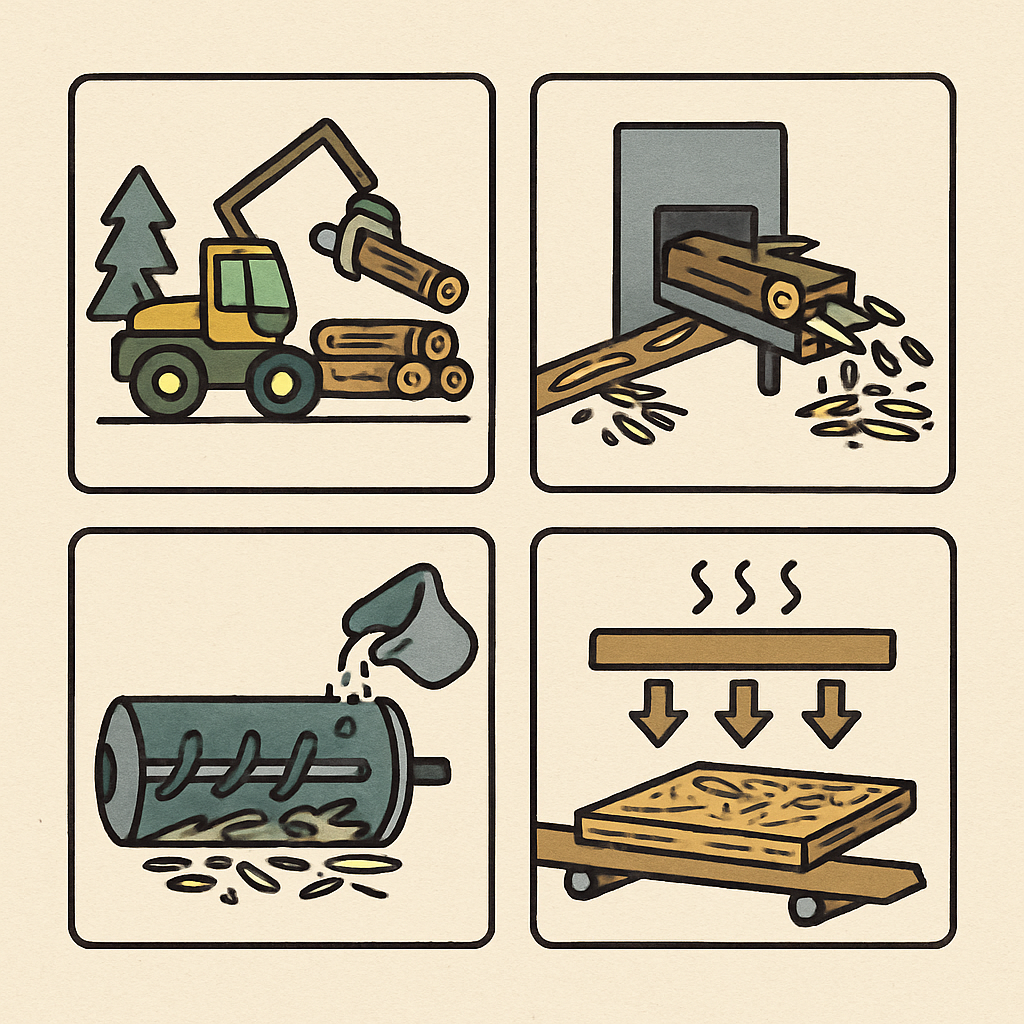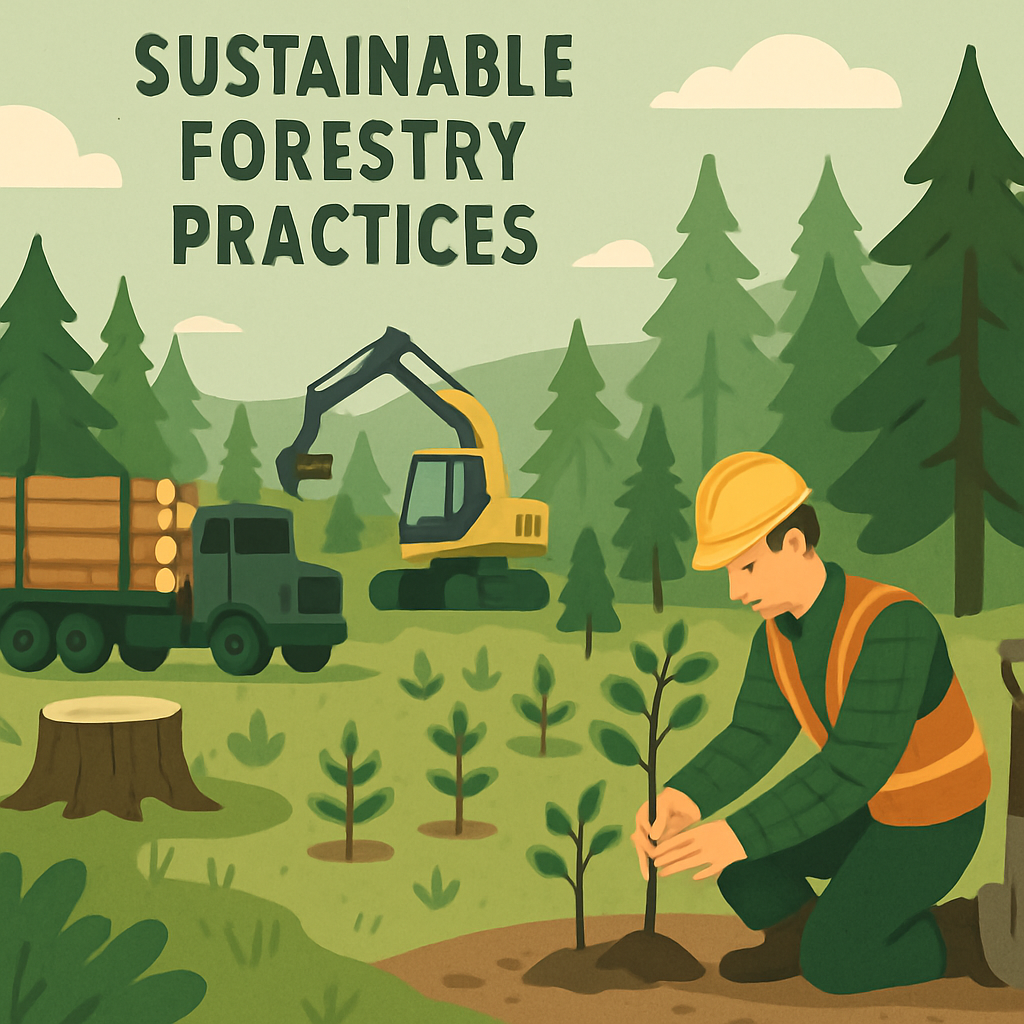When it comes to sustainable building materials, Oriented Strand Board (OSB) is often a topic of discussion. Many people wonder, “What does OSB stand for?” OSB, or Oriented Strand Board, is a type of engineered wood similar to particle board, formed by adding adhesives and then compressing layers of wood strands (flakes) in specific orientations. This article will delve into the environmental implications of producing OSB board and explore whether it lives up to its reputation as an eco-friendly choice.
Understanding OSB Board
What is OSB?
So, what is OSB? Oriented Strand Board is a versatile building material used extensively in construction for sheathing, roofing, and flooring. Often mistaken for plywood, OSB is made from wood strands arranged in layers and bonded with adhesives. This process results in a robust and uniform board ideal for various structural applications.
OSB Board Specifications
OSB comes in different thicknesses and sizes, typically ranging from 1/4 inch to 3/4 inch in thickness, with 7/16 OSB board being a common choice for sheathing. The standard dimensions for OSB sheets are 4×8 feet, although variations like 4×8 oriented strand board are also available. The board’s thickness and dimensions can impact its strength and weight, making it important to choose the right specifications for specific projects.
Environmental Considerations of OSB Production
Raw Materials and Sourcing
The production of OSB begins with sourcing raw materials, primarily small-diameter trees and wood residues. This is often considered a sustainable practice since it utilizes wood that might otherwise go to waste. However, the environmental impact depends significantly on how these trees are harvested. Sustainable forestry practices are crucial to minimizing the ecological footprint of OSB production.
Manufacturing Process
The manufacturing of OSB involves several steps, including debarking, strand cutting, drying, and pressing. Each of these stages has environmental implications. For instance, the drying process requires significant energy, usually derived from fossil fuels, contributing to carbon emissions. Additionally, the adhesives used in OSB production often contain formaldehyde, a volatile organic compound (VOC) that can affect indoor air quality.
Energy Consumption
Energy consumption in OSB production is another critical factor. While the use of wood residues can be considered eco-friendly, the energy required to process these materials is substantial. Manufacturers are increasingly turning to renewable energy sources and implementing energy-efficient technologies to mitigate this impact.
Waste Management
Waste management is an important aspect of OSB board production. Efficient use of raw materials and recycling of wood residues can help reduce waste. Some OSB manufacturers have adopted closed-loop systems where waste materials are reintroduced into the production cycle, promoting sustainability.
Comparing OSB to Other Building Materials
OSB vs. Plywood
When comparing OSB to plywood, both have their pros and cons. OSB tends to be more affordable and has a more consistent structure due to its manufacturing process. However, plywood is often considered more durable and moisture-resistant, making it a preferred choice for certain applications. From an environmental perspective, both materials have similar impacts, but the sustainable sourcing of wood can tip the scales in favor of one over the other.
OSB vs. Other Green Building Materials
In the realm of green building materials, OSB competes with options like recycled steel and bamboo. While OSB is derived from a renewable resource, its environmental impact is closely tied to forestry practices and manufacturing processes. On the other hand, materials like recycled steel offer durability and recyclability, but their production is energy-intensive. Bamboo, a rapidly renewable resource, is another alternative, but transportation emissions can be high if not locally sourced.
Advancements in Sustainable OSB Production
Innovations in Adhesives
Recent advancements in adhesive technology aim to reduce the environmental impact of OSB production. Manufacturers are exploring formaldehyde-free adhesives and bio-based alternatives that offer similar performance without the associated health risks.
Energy Efficiency Improvements
To address energy consumption, OSB manufacturers are investing in energy-efficient technologies and renewable energy sources. Solar panels, wind turbines, and biomass energy are increasingly being integrated into production facilities to reduce reliance on fossil fuels.
Certification and Standards
Certification programs like the Forest Stewardship Council (FSC) and the Sustainable Forestry Initiative (SFI) play a vital role in promoting sustainable OSB production. These certifications ensure that the wood used in OSB comes from responsibly managed forests, enhancing its green credentials.
by Allec Gomes (https://unsplash.com/@allecgomes)
The Future of OSB in Sustainable Construction
As the demand for sustainable construction materials grows, the role of OSB in the industry is likely to expand. Continued innovation in manufacturing processes and a focus on sustainable forestry practices will be crucial in minimizing its environmental impact.
With advancements in technology and greater awareness of the need for eco-friendly building materials, OSB has the potential to become a leading choice for environmentally conscious builders and homeowners.
Conclusion
In conclusion, the environmental impact of OSB board production is multifaceted. While it offers several benefits as a sustainable building material, its overall eco-friendliness depends on various factors, including raw material sourcing, manufacturing processes, and energy consumption. By choosing OSB from certified sustainable sources and supporting manufacturers that prioritize environmental responsibility, we can contribute to a more sustainable future in construction.
By understanding “what does OSB board stand for” and considering the broader environmental implications of its production, consumers and builders alike can make informed decisions that align with their sustainability goals.



